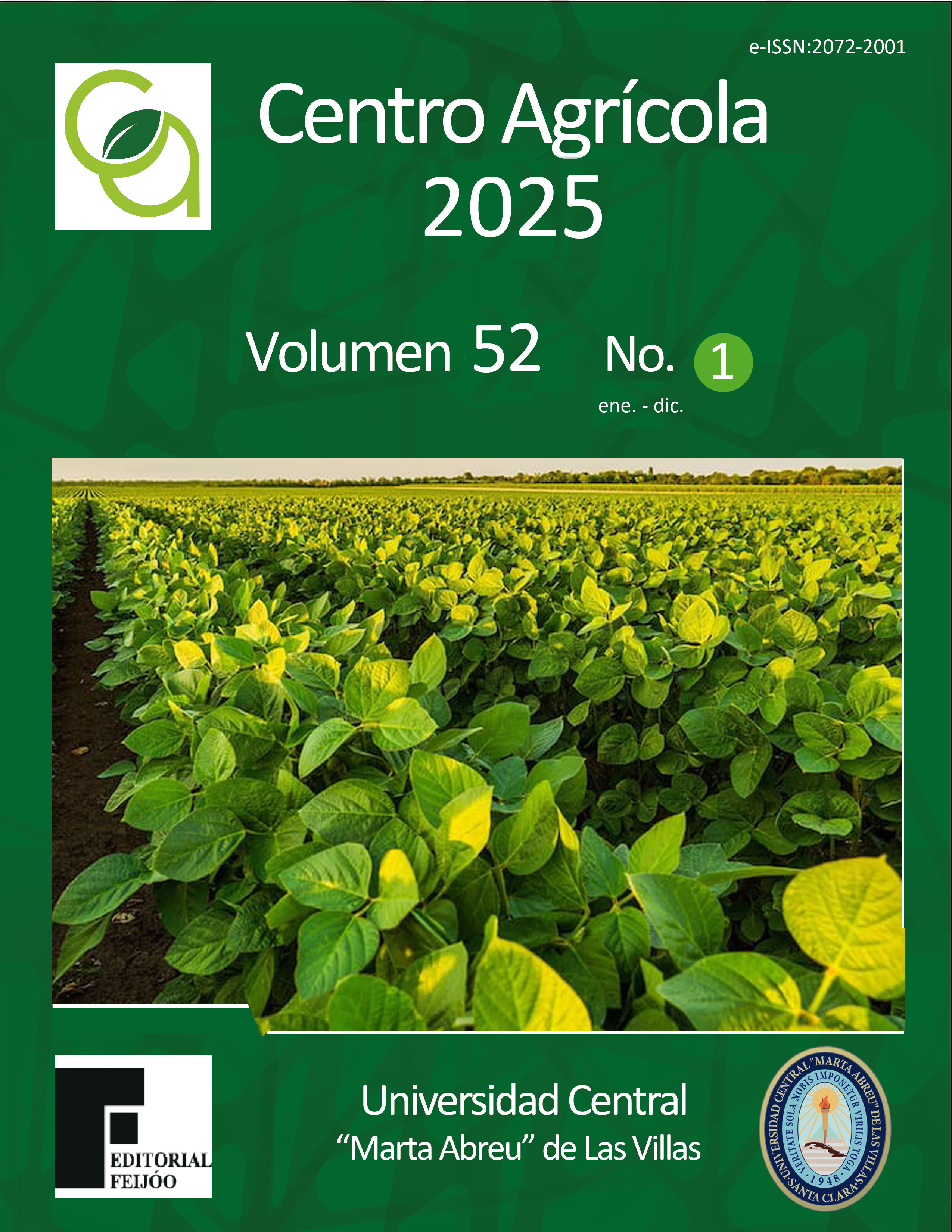CF: cag121232400
ARTÍCULO DE INVESTIGACIÓN
Caracterización agroindustrial de nuevos genotipos de caña de azúcar (Saccharum spp.) en tres ciclos de cosecha
Agroindustrial characterization of new sugarcane (Saccharum spp.) genotypes in three harvest cycles
Yulexi Mendoza Batista*
Rubisel Cruz Sarmiento
Arián Céspedes Zayas
Yoandris Vaillant Cáceres
Instituto de Investigaciones de la Caña de Azúcar de Holguín, INICA – Holguín, carretera a Mayarí, s/n. Guaro, Mayarí, Holguín, Cuba
*Correspondencia: Esta dirección de correo electrónico está protegida contra spambots. Usted necesita tener Javascript activado para poder verla.
RESUMEN
Contexto: Se necesita contar con nuevos cultivares de caña de azúcar de alto potencial agroindustrial que sustituyan aquellos que han disminuido su productividad y adaptación a las condiciones edafoclimáticas de las principales áreas cañeras de la provincia de Holguín o que comienzan a mostrar susceptibilidad a enfermedades o plagas.
Objetivos: Caracterizar el potencial agroindustrial de nuevos genotipos de caña de azúcar (Saccharum spp.) en tres ciclos de cosecha.
Métodos: Se plantó un experimento de campo en un diseño de bloques al azar con dos réplicas y 12 tratamientos. Se evaluaron las variables de cosecha, porcentaje de Pol en caña, toneladas de caña por hectárea y toneladas de Pol por hectárea. Se realizaron análisis de varianza para cada variable en estudio y se utilizó la prueba de rango múltiple de Tukey para la comparación múltiple de medias.
Resultados: Los análisis de varianza solo mostraron diferencias significativas entre los cultivares para la variable contenido azucarero, sin embargo, al realizar la comparación múltiple de medias se observó que la mayoría de los genotipos en estudio no mostraron diferencias significativas con el control, evidenciándose los resultados del Programa de Fitomejoramiento de la Caña de Azúcar en Cuba en la obtención de cultivares de alto rendimiento agrícola y alto contenido azucarero.
Conclusiones: Los cultivares que por su comportamiento integral alcanzaron mejores resultados fueron ‘C97-513’, ‘C00-545’, ‘C00-523’, ‘C92-509’ y ‘C00-528’.
ABSTRACT
Context: There is a need for new sugarcane cultivars with high agroindustrial potential to replace those that have decreased their productivity and adaptation to the edaphoclimatic conditions of the main sugarcane growing areas of Holguín province or that are beginning to show susceptibility to diseases or pests.
Objectives: To characterize the agroindustrial potential of new sugarcane (Saccharum spp.) genotypes in three harvest cycles.
Methods: A field experiment was planted in a randomized block design with two replications and 12 treatments. Harvest variables were evaluated as percentage of Pol in cane, tons of cane per hectare and tons of Pol per hectare. Analyses of variance were performed for each variable under study and Tukey's multiple range test was used for the multiple comparison of means.
Results: The analysis of variance only showed significant differences between cultivars for the sugar content variable, however, when performing the multiple comparison of means, it was observed that most of the genotypes under study did not show significant differences with the control, evidencing the results of the Sugarcane Breeding Program in Cuba in obtaining cultivars with high agricultural yield and high sugar content.
Conclusions: The cultivars that due to their integral behavior achieved better results were ‘C97-513’, ‘C00-545’, ‘C00-523’, ‘C92-509’ and ‘C00-528’.


